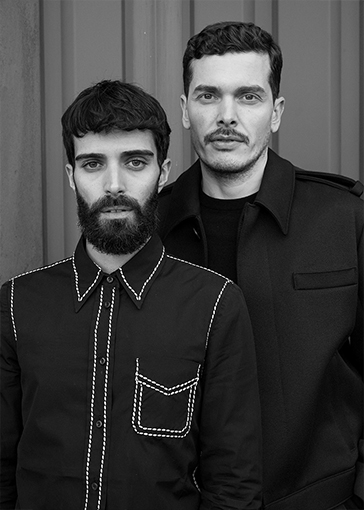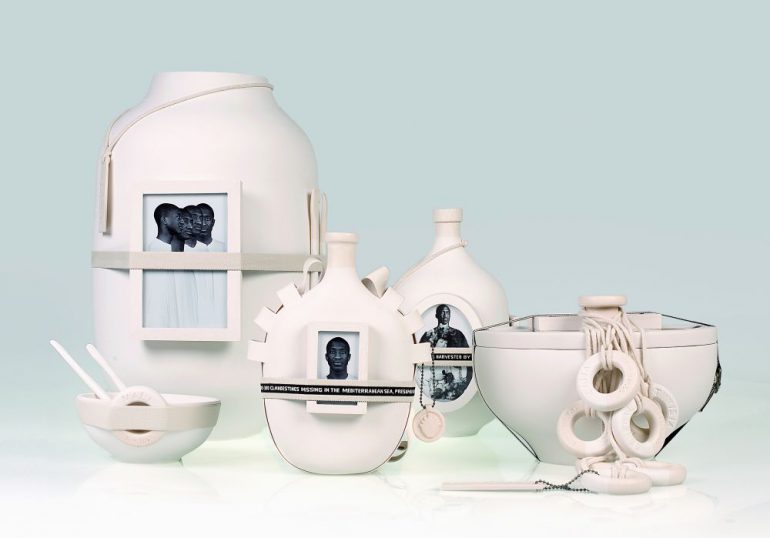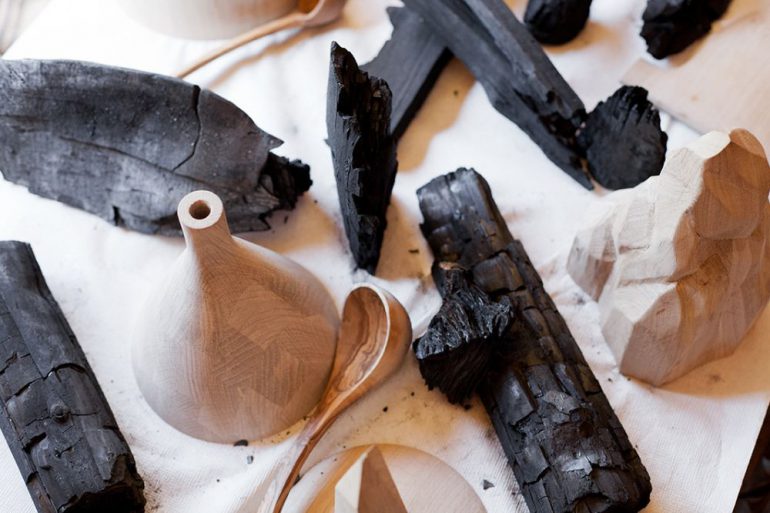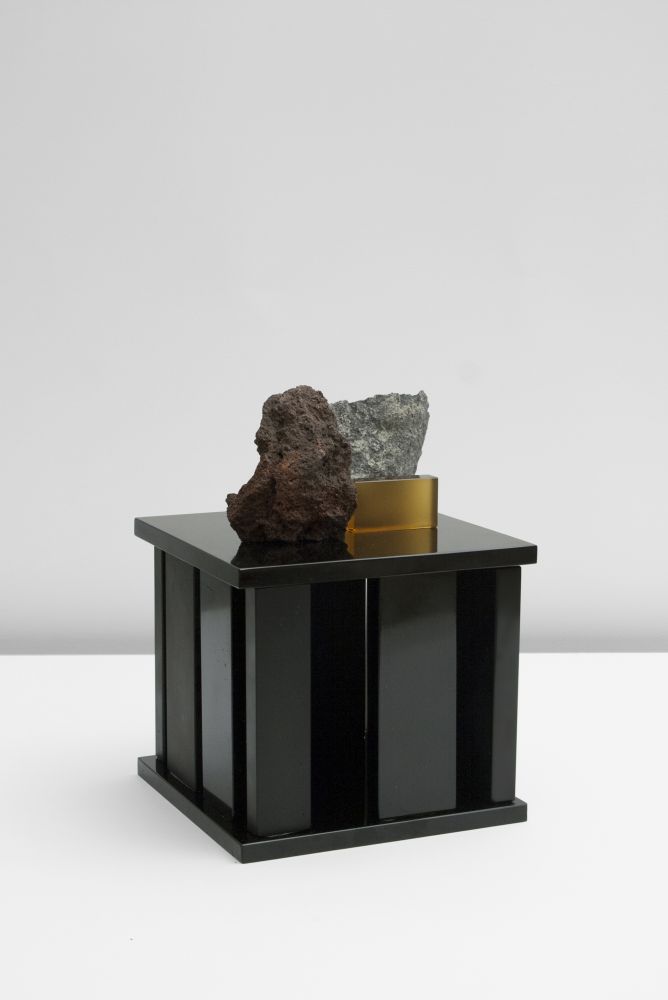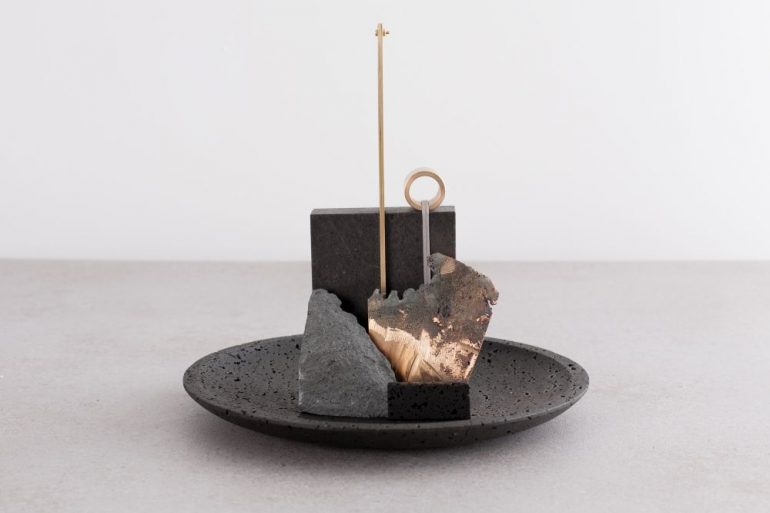What appeals about their work is the fact that they constantly question and redefine the boundaries and modalities of a profession that has hitherto appeared to be defined by the rules of a structured and powerful global market. I think that this ability to create “open works” that are thought-provoking, right on the edge and able to catch the eye is one of the pre-conditions that should be imposed on design and architecture today.
We met Andrea Trimarchi, who founded the studio together with Simone Farresin and suggested that we play a game in which they have to define one or two simple key words.
LM | Your way of thinking and shaping your work seem to be defined by a number of different terms, yet one of the starting points seems to me the word “share” which is also the title of our new issue of Platform and which immediately made me think of you.
AT | Thinking about our work, the idea of sharing is present at various levels. The most literal is obviously the collaboration between the two of us since the way we work is really the meeting of two people who generate a third one on an intellectual level. Here it’s not so much the idea of compromise per se but rather the idea of sharing. If instead we think of some of our work like the recent “Ore streams” but also “De Natura fossilium” or “Botanicà”, the research process developed in collaboration with a number of different professionals. In the case of Ore Streams for example, (developed for the Victoria National Gallery in Melbourne and focused on issues related to the recycling of electronic industry products) we conducted a large number of field interviews trying to understand the connections or the lack of dialogue between the different players. We talked with companies that deal with the recycling of electronic products in Europe, NGOs trying to establish responsible workshops in developing countries, universities that do research in the sector, electronics producers and even those involved in legislation. For us, researching and sharing research is essential – it’s a way of demonstrating analytical ability and giving design responses.
LM | Working with constant dialogues and sharing means that limits and rules become important.
AT | I would say rules. Simone (Farresin, his partner) will tell you that I am a person who sets limits to rules, I am more rational, while he is more intuitive. Limits and rules are important in a job, we do not like not having a brief, rather, the more limitations we have the more fun we have. We have millions of rules, we work as a couple, we have lots of layers and therefore we have to create a lot of strict rules which is not problematic for us because the more limits and rules we have the better it is to express ourselves. There being two of us allows us to have a constant dialogue, to have an alter ego and like Dr. Jekyll and Mr. Hyde, we have alternating roles which makes the work much more consistent.
LM | Following on from this I’d like to look at the third word which is couple. You and Simone are a couple in work and in life. The thing that strikes me is that when you present the projects a certain duality is evident, there is never a single piece, it’s as if they represent the necessary dialogues between the things you do. Is there a dialogue mode for your way of thinking as a couple and the way you deal with things?
AT | We are two people, but with a single brain and together the two of us are a designer. I don’t think we could work if we were not together. All our work has a concerted nature in common: we don’t like to design a single piece but rather to create collections. You always need more than one piece to tell a story and this stems from the fact that we are a duo, we have two uniqueness and we tell a story as a couple.
LM | I believe we are currently at a time when it is difficult to operate through concentrating everything in one single thing, but I also think it is very important today to create narratives.
AT | If we did as you described, the piece would become univocal. A collection on the other hand allows you to express different aspects and the result is much more open. For example, the collection with the Moor’s heads – Sicilian work – was created to leave an opening, the possibility of changing the narration which is why we had a bare ceramic and the meaning behind tying the objects on with strings was that of giving the idea that something could evolve over time.
LM | You have the ability to control every element you produce, starting from how you communicate it and introduce it in the same positively obsessive way in which a watchmaker checks a mechanism or those who can’t distinguish between productive, ideational and communicative thought. It’s one big strategy that becomes a very powerful symbol and I think it’s typical of your generation.
AT | That’s very true. For us, in fact, the text of the project is as important as the object itself and we take great care of the presentation part. Storytelling is important for the way we work. Before starting any collection, we write a text, a sort of declaration of intent. Obviously we have a very long and complex research process but we attach a great deal of importance to the aesthetic component. Looking at one of our objects it’s possible to stop at the formal aspects but you can also delve into the various levels of meaning that make it up. Any object we own, from a mobile phone to a washing machine is full of narratives and yet despite this, these everyday objects tend to be opaque, they do not keep track of the production processes that created them while we on the contrary try to bring out these narrations in our work.
LM | While we’re on the subject let’s talk about the beauty of your work, to which I would like to add the adjective “dense” because thanks to the different thresholds you mentioned, your interventions invite the viewer to browse, to examine the object better, to understand what is done and see how the material is used. The object is a seductive invitation to discover a mystery.
AT | It’s true. We have more difficulty manifesting this aspect in Holland where thanks to Calvinism beauty is neither contemplated nor considered. In Eindhoven where everything is anything but beautiful, it has helped us to rediscover the content of beauty.
LM | In a completely mechanical way I’d like to move from beauty to form which in addition to being part of the name of your studio, has its own intrinsic value. In recent years the word form (like the word beauty) is rarely used, at least in the architectural field and also, I believe in design. It is as if the formal approach to things is considered sinful or wrong.
AT | Our name Formafantasma actually means that form is the result of process. Often, the form turns out to be different to how it was originally conceived. When we worked with the “De natura fossilium” lava project the initial image was formally much more organic, lava is highly unpredictable and very difficult to handle, so the only way to handle it was to work it through casting in moulds. This approach is typical of our way of working: objects are formalized but this is not an initial decision, rather it is the consequence of a process.
LM | The final product is almost unseen in the way you express your work but you give a lot of importance and space to the process. You manage to compress something uncontrollable into a shape and then work or rather try to work with natural materials, highlighting the relationship between nature and artifice, so the process demonstrates the importance you give to the time that the work takes, to the production process. So let’s talk about the word time.
AT | In December the National Gallery in Melbourne will present a project that we started two and a half years ago on the extraction and reclamation of metals. The research work was very long, we met more than 100 people, recorded more than 150 hours of interviews and a documentary will be made about it but we still got on with the creation of the objects as requested by the museum all the same. In this case we could have finished the job just with the research part and the creation of a manual but this was one of those cases where the process was really much more important than the final result.
LM | Another term that came to mind while looking at your work is critical thinking. Today, without this there is no design thinking. It is often thought that since we have been trained as perfect consumers we cannot apply critical thinking but rather a form of renegotiation of the tools that exist in the world and which we use to work out and strengthen a direct, sharp and conscious approach.
AT | As far as these terms go, we would like to be more radical. We really like the commercial work we do but it should be dealt with in different terms and in fact we are trying to understand how to split the two things so as to better present them. Having said that, I believe that critical thinking must be developed and expanded in the teaching context. Simone and I have been teaching at the Eindhoven Design Academy for years now and we are also in charge of the MANMADE course at the Made program in Syracuse and we see that there is a lack of critical thinking in the new generations. Most of the projects we see are the result of an unawareness of what is happening. There are no design courses in the world that work on the concept of ecology in a radical way. If it were not for certain biennials like that of Ljubljana, Chicago, or Istanbul that manage to give voice to critical thinking, contemporary design would remain a discipline that constantly supports the status quo. In the case of the aforementioned Ore Streams for example, we developed the work in two parts, one much more pragmatic and the other much more conceptual. In the first part we tried to establish some key rules for the design of electronic products that consider both the problems of recycling in first world countries and those in developing countries (after all if we accept a global economy we must also embrace the responsibilities).
The result is a video installation consisting of interviews with specialists in the field and a 3D animation that summarizes our analysis. In the second part we went back instead to drawing objects. In this section we weren’t looking so much for solutions but a more conceptual reflection. It is our way of giving the world new objects generated by reflections within the studio. Rather than finding solutions here, we try to problematize the relationship that design has with production. We designed a series of objects that are office-related but which have become hybrids thanks to the remnants of recycled electronic products. Some parts of the objects are gold plated (recovered from printed circuit boards) and many pieces are digitally printed with images of Mars released by NASA.
We decided to go back to the office because we believe it is the place in which the parameters of modernism based on efficiency and quantification are most evident. It is a simplified perspective on complexity, the same attitude based on quantification and apparent efficiency that is applied to the senseless use of natural resources. For us the images of Mars are a way of offering an open, almost cosmological perspective on the work of man on the planet as well as being a reference to the alien origin of many materials on the planet. For example, gold is present on earth because of a meteor shower.
LM | It’s true, this idea of having things just because we can possess them is perverse. In all your work there is an affectionate challenge or duel featuring history and traditions, something that is widespread among many designers who study techniques and the stories behind the materials involved: you then use these stories with an intelligent lightness.
AT | Probably in another life I would have been a historian or an anthropologist. These subjects fascinate us, certainly a Sicilian like me who has always lived in a very traditional context where heavy industry was the only one there was. Our attitude is looking back to look forward, we can’t look forward if we are not aware of what was there before. When we came to Holland we were surprised by the lack of historical awareness since for us it is fundamental. It is a way of understanding the current state of affairs and then knowing how to change them.
Interview . Luca Molinari


